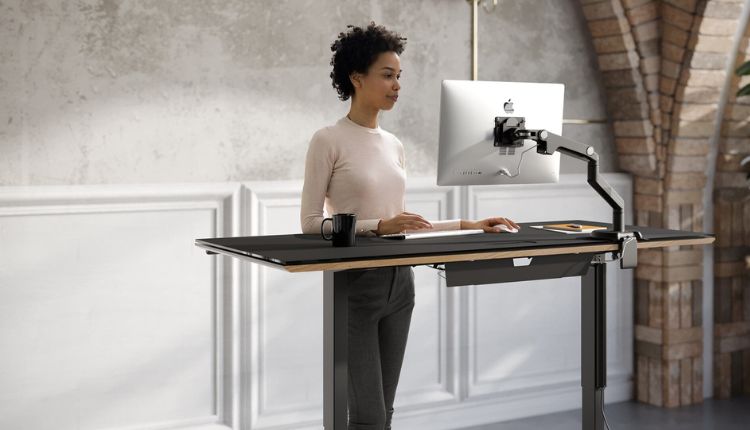In the modern era, where remote work has become a norm, setting up a comfortable and productive home office is crucial. One of the essential elements of this setup is a standing desk. A standing desk can significantly improve your posture, reduce back pain, and increase productivity. However, choosing the perfect standing desk for your home office can be a daunting task given the plethora of options available in the market. This guide aims to simplify this process by providing you with comprehensive information on how to choose the perfect standing desk for your home office.
Firstly, let’s understand why a standing desk is an excellent investment for your home office. Research has shown that prolonged sitting can lead to numerous health issues such as obesity, heart disease, and even cancer. A standing desk allows you to alternate between sitting and standing positions throughout your workday, promoting better posture, increased blood circulation, and overall improved health.
Now that we’ve established the importance of a standing desk let’s delve into the factors you should consider while choosing one.
1. **Adjustability**: The primary feature of a standing desk is its adjustability. Ensure that the desk you choose allows you to easily switch between sitting and standing positions. Some desks offer manual adjustment while others come with electric controls for seamless transition. Consider your comfort and convenience when deciding between these options.
2. **Height Range**: The height range of the desk is another critical factor to consider. The ideal standing desk should align with your elbow height when you’re standing up straight, allowing your arms to rest comfortably at a 90-degree angle. Most desks cater to people between 5’4″ and 6’7″, but if you fall outside this range, look for desks specifically designed for shorter or taller individuals.
3. **Desk Size**: The size of the desk should be determined by both your workspace area and your work requirements. If you have a spacious home office and require multiple monitors or other equipment, a larger desk might be suitable. However, if your workspace is limited, opt for a smaller, compact desk that can accommodate your essentials without cramping your area.
4. **Material and Build Quality**: The material of the desk significantly impacts its durability and aesthetics. Desks made from solid wood or steel are typically more durable but also more expensive. On the other hand, desks with a laminate or veneer finish are more affordable but may not last as long. Choose a material that balances durability, aesthetics, and cost according to your preference.
5. **Ergonomics**: Ergonomics is the science of designing products to maximize user comfort and minimize strain. An ergonomic standing desk should have rounded edges to prevent forearm discomfort and should be stable at all heights to avoid wobbling.
6. **Additional Features**: Some standing desks come with additional features like built-in outlets, cable management systems, or even treadmills for walking while working. While these features can enhance convenience and productivity, they also add to the cost of the desk. Consider whether these features are necessary for your work style before making a decision.
7. **Budget**: Finally, consider your budget. Standing desks can range from a few hundred dollars to over a thousand dollars depending on their features and build quality. Determine how much you’re willing to invest in this piece of furniture and choose accordingly.
In conclusion, choosing the perfect standing desk for your home office involves careful consideration of several factors including adjustability, height range, desk size, material and build quality, ergonomics, additional features, and budget. By taking these factors into account, you can ensure that you choose a standing desk that not only enhances your productivity but also contributes positively to your health.
Remember that while a standing desk can significantly improve your work experience, it’s equally important to maintain good posture, take regular breaks, and incorporate some physical activity into your workday. After all, the ultimate goal is to create a home office setup that promotes productivity, comfort, and health.

